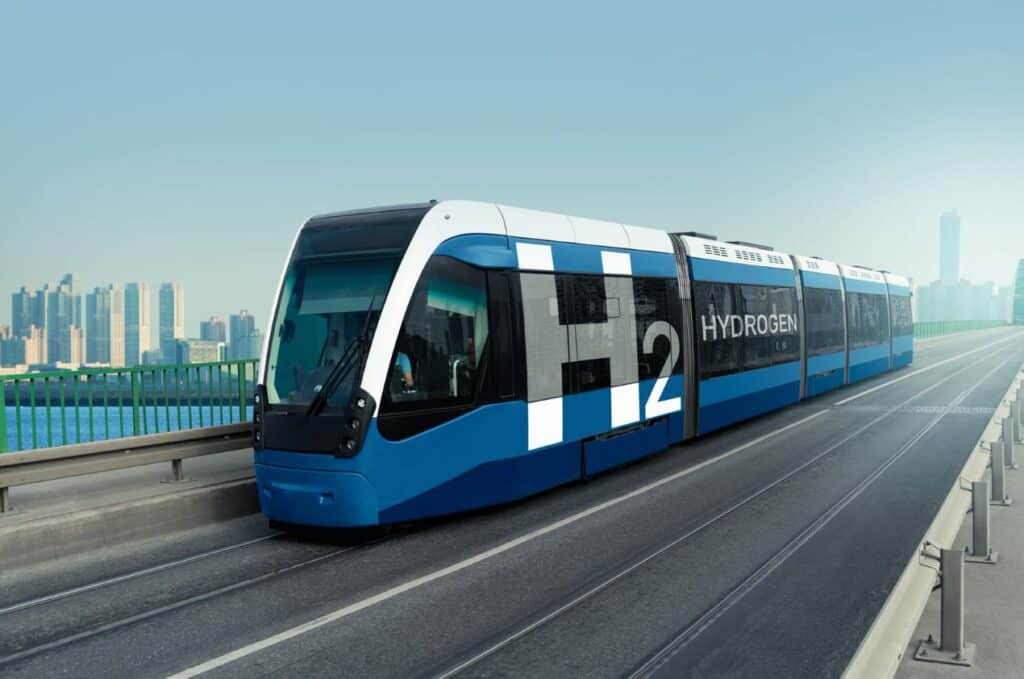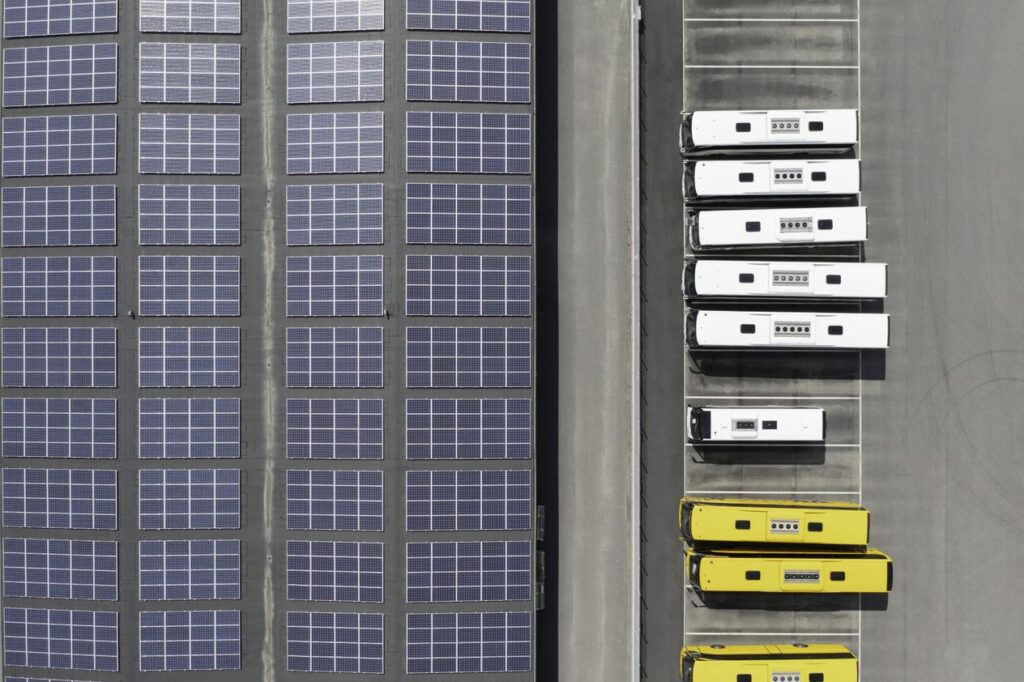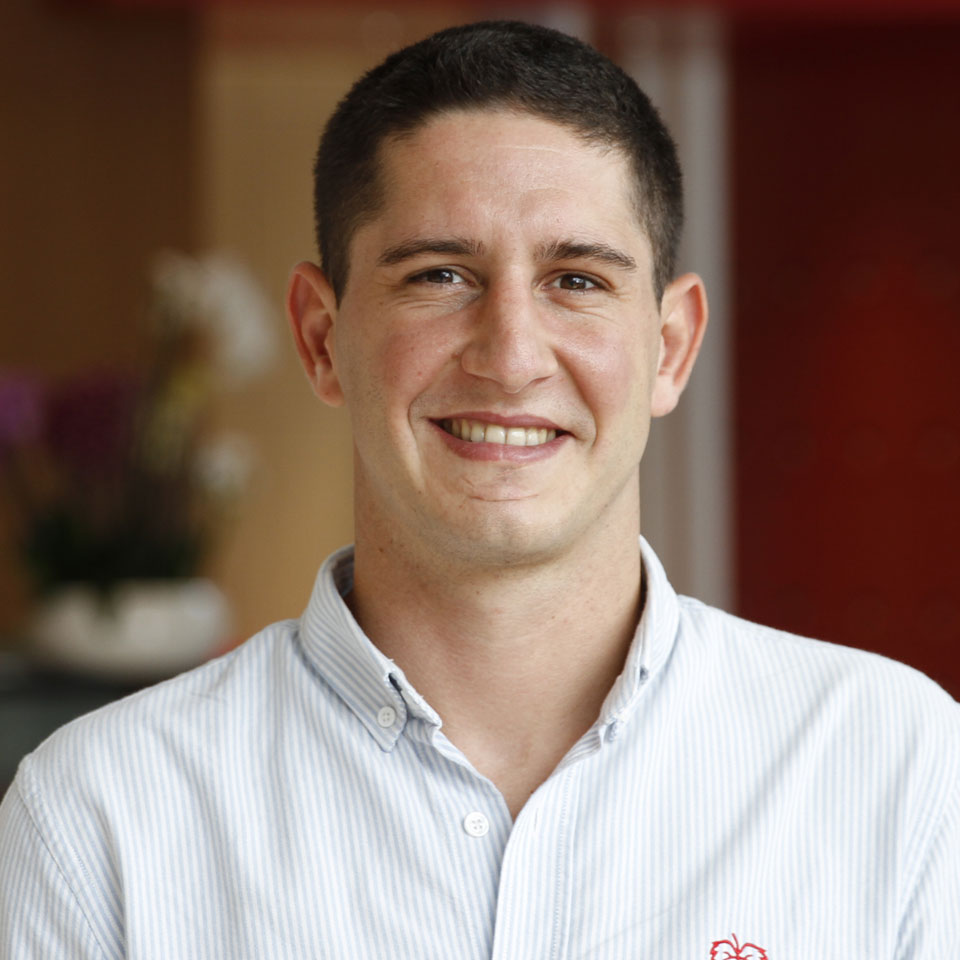Drawing on years of practice in the planning, design and implementation of public transport projects around the world, SYSTRA engineers are sharing their experience and systems approach in a series of articles on energy transition for mobility, the first of which provided an insight into the global challenge of mobility decarbonisation.
In this second article of our series, we take a look at the leading role played by public transport authorities (PTA) through 3 case studies.
OUR VISION
Energy transition in public transport is the key to the wider decarbonisation of mobility. It is setting a visible precedent for other modes of transport, advancing technical solutions and stimulating markets for alternative energy sources.
From how energy is produced and transported, to physical infrastructure related to new technology and organisational changes, transition requires a systematic approach which encompasses many parameters. Lessons that SYSTRA’s engineers have learned over decades, working on diesel to electricity transitions and designing 50% of the world’s metros in service and high-speed line projects, are now supporting today’s energy transitions.
Public transport is already a more environmentally responsible way to travel than by private car, emitting less carbon per passenger per journey. But there is still much more to be done: in Europe, around 50%1 of the rail network is electrified, 55%2 in Asia and very little in the Americas, Middle East, Australia and Africa; and most of the world’s bus fleets are still running on diesel.
Of course, there are many situations where electrification by overhead line or third rail is not a practical or viable solution. In these cases, alternative fuel technologies such as battery electric vehicles, biogas, hydrogen or hybrid arrangements can deliver carbon savings and better air quality, either as a stepping-stone solution or as a longer term one. It is a matter of achieving the adequate trade-off between the objectives of PTAs and alternative technology benefits.
There are many hurdles to clear on the journey through energy transition. Transport authorities must maintain effective services as they instigate change, often making phased alterations to working facilities while the technology required for charging or refuelling is itself being implemented and the rolling stock gradually renewed. PTA must have renewable energy strategies that support wider decarbonisation goals, that hedge energy market variation, perhaps finding opportunities to generate their own energy, like Delhi Metro (DMRC) which has installed over 142 rooftop, solar panels to supply 4% of its consumption3 .
In addition to this raft of challenges, authorities must demonstrate that public funds are being responsibly spent, now and in the future, and select some priorities. Again, a systems approach is needed to overcome those challenges, as illustrated in the 3 following case studies.
2Railway electrification is expected to grow worldwide (railwaypro.com)
3DMRC to Increase Use of Renewable Energy by 50% with Vertical Solar Panels (renergyinfo.com)
CASE STUDY #1: In France, Hydrogen trains integrating the energy supply chain

In France, Hydrogen trains integrating the energy supply chain
For any energy transition to be successful, the way that energy is generated, transported, stored and distributed must be an integral part of the feasibility and planning phases of a project. For a transition to hydrogen, the big challenge today is that the supply chain does not exist.
Beyond technical issues, our engineers consider a raft of other factors. There are environmental and economic issues to be weighed up, social and community impacts, reputational risks, upfront investment and operational costs to consider, alongside how the logistics of hydrogen supply will interface with and influence the operations of the service itself.
Our engineers assist PTAs to implement hydrogen solutions and their feedback is to assess existing nearby hydrogen production projects, together with their carbon footprints since hydrogen can be created using a variety of processes, some of them involving fossil fuels. Since green hydrogen made using electrolysis with ‘clean’ electricity is the ultimate goal, there may be a need to look at renewable energy strategies or enter into power purchasing agreements (PPAs) which set up long-term deals for renewable power. The optimum location of production plants, the economic and environmental cost of transporting the hydrogen, the selection of refuelling sites will be all considered by our engineers.
In France’s Occitanie region, a trail-blazing project on the Toulouse – Montréjeau – Luchon line will see the reopening of the 36km-long section between Montréjeau and Luchon, closed since 2014. The three hybrid electric-hydrogen trains are being procured as part of a batch of 12, in conjunction with three other French regions. SYSTRA is advising on the strategy for hydrogen supply, its transport and storage and the selection of a location for the hydrogen fuelling station, working with two specialist hydrogen partners.
At SYSTRA, we believe that within complex rail projects, the holistic approach facilitates decision-making and eventually optimises the total cost of ownership. This why our specialists in real estate, environmental issues, rail construction and operation and hydrogen are all feeding into the project, deploying a detailed upfront risk identification and multi criteria analysis, developed on other energy transition projects.
Hydrogen may be a good low-carbon option for trains in rural regions or where line electrification is too expensive for some rolling stock running daily. Powering trains using low carbon hydrogen rather than diesel can result in huge savings in carbon emissions; it has been calculated between 80 and 95% in operations for this specific case study.
CASE STUDY #2: In the US, the phased transition of a multi-energy operational site paired with renewable energy development

In the US, the phased transition of a multi-energy operational site paired with renewable energy development
For PTAs and operators, phased transitions can sometimes make the most sense when the project is to retrofit an existing depot. It brings financial investment stakes to consider in a context of budget constraints, their limitations on real estate availability in urban areas and the need to keep providing reliable public transport services while the transition is underway. During the transition phase, several energy technologies are operated on the same depot – existing ones like Diesel and new one(s) – which is an operational challenge. There can also be technical reasons why transitions are best taken in steps, such as limited ranges for battery electric vehicles or the power supply with constraints from the existing grid.
How can you get around these constraints? From our project experience, we learnt that AETs should be carefully selected, depending on the bus routes and services or, where this is not possible, that operational plans should be revised. Extensive scenario testing should factor in changes to services’ robustness, to refuelling or charging technology solutions, and to energy supply, with programming that considers the changing operation of a depot in parallel with phased construction works. Also training of the operator is one of the key success factors.
In the US, SYSTRA supports the Washington Metropolitan Area Transit Authority (WMATA) which is deploying a phased approach to the transition of its bus fleet at the Bladensburg Bus Garage. We are the engineering of a design-and-build consortium on the electrical and CNG infrastructure.
Some bus services will transition first to CNG, due to its longer range and its lower cost of ownership compared to electric. Other routes will transition to electricity, with an eventual transition to a 300-strong all-electric bus fleet. Roof-mounted PV solar panels on the new facility will generate energy for the buildings, equivalent to the demand from around 25 e-buses (out of 150). The business case showed it is expected to divide the energy cost by 2 for the building, hedging from electricity market fluctuations, compared to the baseline with no PV where electricity would be provided from the electric grid.
SYSTRA studied several ‘What if’ scenarios on the future operations to test its robustness and the related infrastructure. Our design, being performed in BIM (Building Information Modelling), ensures the underlying infrastructure is equipped for the next generation of bus fleet in terms of monitoring, operations and maintenance.
For this use case, it has been calculated that compared to its current internal combustion engine bus fleet, switching to a battery electric bus fleet would reduce yearly carbon emissions in operations by 83% 4. Additional benefits would include the reduction of local polluting emissions (NOx, hydrocarbon, particles) and less noise pollution due to the quieter operation of electric vehicles.
CASE STUDY #3: In Canada, optimising electric bus infrastructure: a complex challenge

In Canada, optimising electric bus infrastructure: a complex challenge
Bus electrification projects require setting off down the best route, using efficiently design resource and delivering an optimal solution to a complex problem. Among the parameters that must be considered are peak power supply and demand, the physical configuration of the depot and its electrical infrastructure, upfront investment and available fundings. For the latter, some PTAs chose to issue green bonds to finance their project.
Criteria such as the number of rows in a charging garage, the number of buses per row, the type of charger and their distribution have a significant impact on the energy consumption profile. Our experience shows that getting the right combination can reduce peak power demand by up to 70%.
This extensive scenario modelling is only possible using digital tools. Our engineers use the Transit & Electromobility Smart Simulator (TESS), our bespoke bus charging facility simulator which models parking patterns, vehicle movements, electric infrastructure, power consumption, electricity tariffs and provides outputs like operation plan compliance, charger-to-bus ratios, power peak, operation and investment costs. Developed using real-life data, TESS helps identify optimum operation scenarios of the electric infrastructure that would otherwise be missed.
TESS was deployed on the preliminary design of an e-bus depot for Réseau de transport de la Capitale (RTC) in Quebec, Canada, which is transitioning its 172-Metrobus fleet from diesel to electric. With challenges including the capital budget, the km range of e-buses with variation due to extreme weather temperatures, a tight space for the depot and charging arrangements, fire hazard, TESS simulated different combinations to work out which would give the best results in terms of capital and operational costs and returns while ensuring a resilient operation plan.
By switching from diesel to electric buses, in a country where 99% of electricity is already generated by hydropower, 16,500 tonnes of carbon emissions during operations will be saved each year. Scenario testing with TESS means that the proposed design (whose main feature is a 2e-buses per charger ratio) will require 68% less peak power, leading to a lower electricity tariff, and 28% savings on the capital cost of the electrical infrastructure compared to the baseline scenario with a 1 e-bus per charger ratio and no optimisation.
The 3 case studies were the opportunity to see how the systemic approach is the key to integrate the whole energy supply chain in an energy transition project, to work on multi-energy phased depots and to optimise the electric infrastructure with digital solutions. Let’s not forget that crossing that, safety is always a prerequisite with new technologies and via our systemic approach. This is why SYSTRA has developed some specific independent safety assessment skills, especially in Australia for two tramway projects using battery while running under catenary free sections: Paramatta Sydney and Newcastle. Risks of battery fire at depot, in operation and electromagnetic fields while charging in operation have been closely monitored to validate the implementation of those projects.
Energy transition within public transport can contribute to decrease substantially carbon emissions in operation. Even if those technologies bring investment and operation cost challenges, there are strong ways to mitigate them.
STILL TO COME…
In the next article, we will be delving further into how digital solutions support smart energy transition projects for mobility.
Photo Credits: GettyImages
 Australia
Australia  Brazil
Brazil  Canada
Canada  China
China  Denmark
Denmark  France
France  India
India  Indonesia
Indonesia  Ireland
Ireland  Italy
Italy  Malaysia
Malaysia  New Zealand
New Zealand  Norway
Norway  Poland
Poland  Saudi Arabia
Saudi Arabia  Singapore
Singapore  South Korea
South Korea  Sweden
Sweden  Taiwan
Taiwan  Thailand
Thailand  United Kingdom
United Kingdom  United States
United States  Vietnam
Vietnam 





